Hey, fruit lovers, do you know how to cut a pear? Unlike other fruits, pears have an odd shape, making it difficult to know where to start. But fear not! With a few simple steps, you can cut and slice them like a pro.
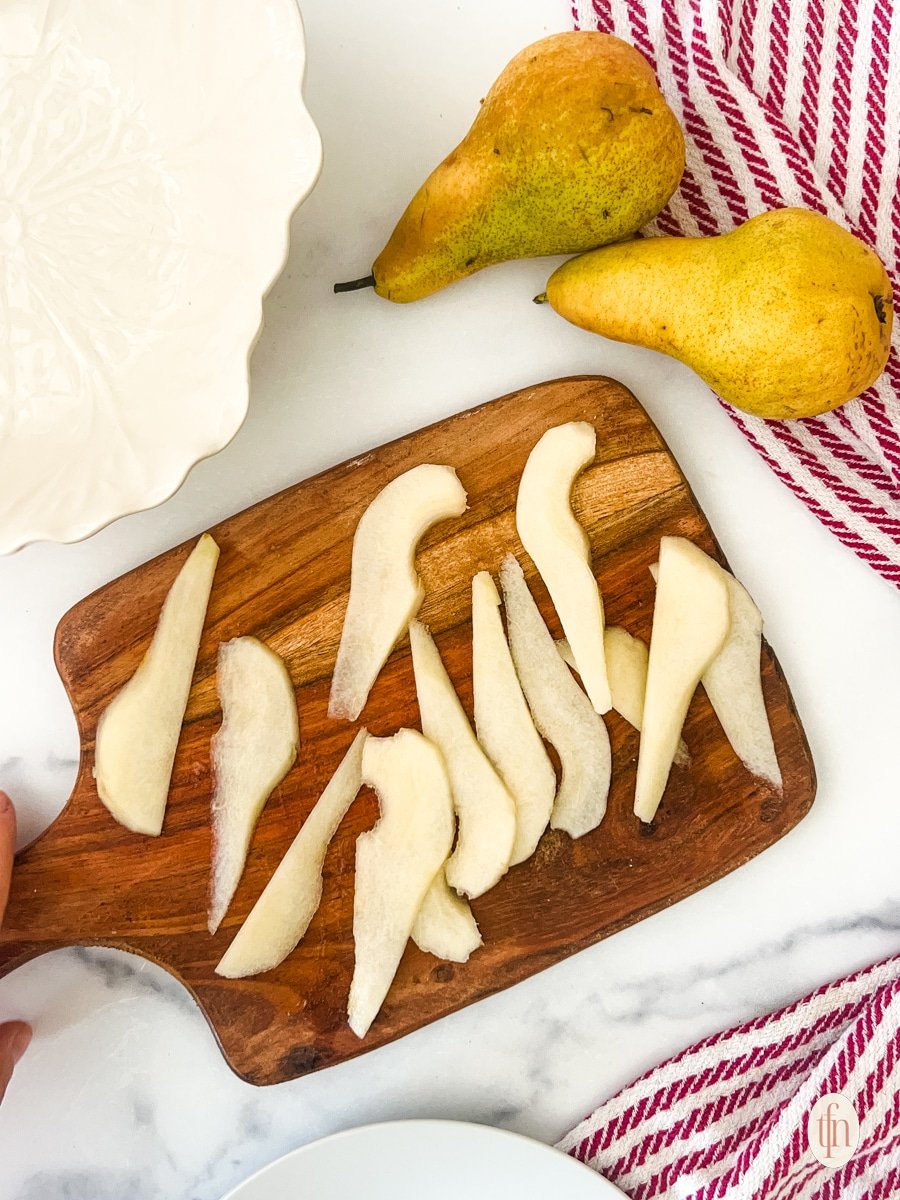
Selecting the Right Pears to Cut
When it comes to selecting the right pear, there are two key factors to consider, including understanding varieties and knowing when they’re ripe enough to eat.
Try adding pears your charcuterie boards like this charcuterie tree or this fruit and cheese fruit Christmas tree.
Understanding Pear Varieties
Pears come in many different varieties with unique flavor and texture. Some of the most popular varieties include:
- Bartlett: This is the most common pear variety in the United States. It has a sweet, juicy flavor and a soft texture.
- Anjou: Anjou are less sweet than Bartlett pears and have a firmer texture. They are great for baking and cooking.
- Bosc: Bosc pears have a sweet, nutty flavor and a firm texture. They are great for eating raw or cooking.
- Comice: Comice are very sweet and juicy, with a soft texture. They are great for eating raw or using in fruit salads.
How to Know When Pears Are Ripe
When selecting pears, it’s also important to assess their ripeness. Pears are unique in that they ripen from the inside out, so it can be difficult to tell when they are ready to eat.
- Check the neck: Gently press on the neck of the pear with your thumb. If it gives slightly, it’s ripe and ready to eat.
- Look for color: They should be a uniform color all over. Unripe pears have green spots.
- Check the stem: If the stem is still attached and looks fresh, it’s likely ripe.
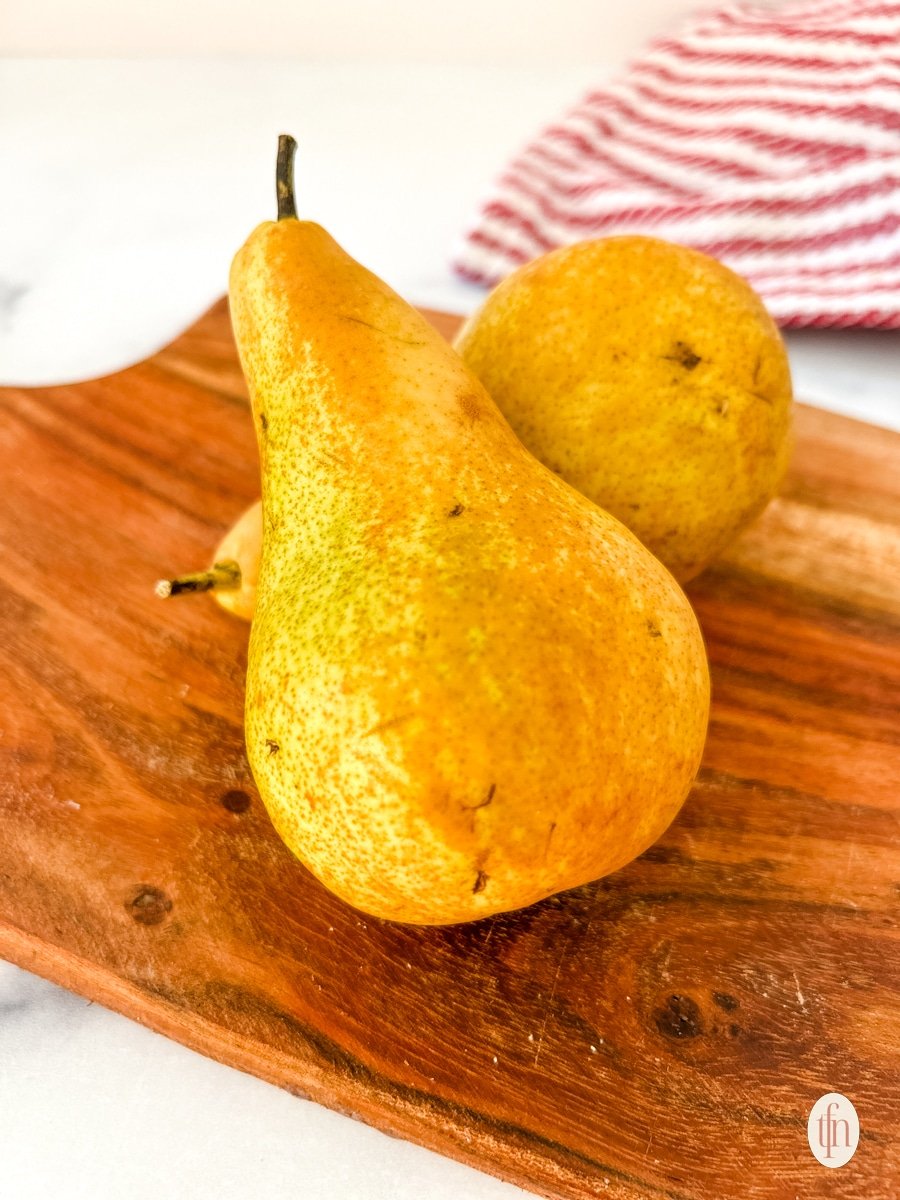
Preparation
Before you can cut pears, you need to prepare it. This involves washing and peeling (if you choose). Here’s how to do it.
Washing the Pear
To wash a pear, hold it under running water and gently rub it with your hands to remove dirt or debris. If you want to be extra cautious, you can also soak it in a solution of water and vinegar for a few minutes. This will help to remove any bacteria that may be on the surface of the fruit. Once you have washed it, dry it with a clean towel.
To Peel or Not to Peel?
Whether or not you peel a pear is a matter of personal preference. Some people prefer to leave the skin on because it contains fiber and nutrients. Others prefer to peel it because they find the skin tough or bitter. To peel, use a vegetable peeler / fruit peeler or a sharp knife. Start at the top and work your way down, following the curve of the fruit. Be careful not to remove too much of the flesh with the skin.
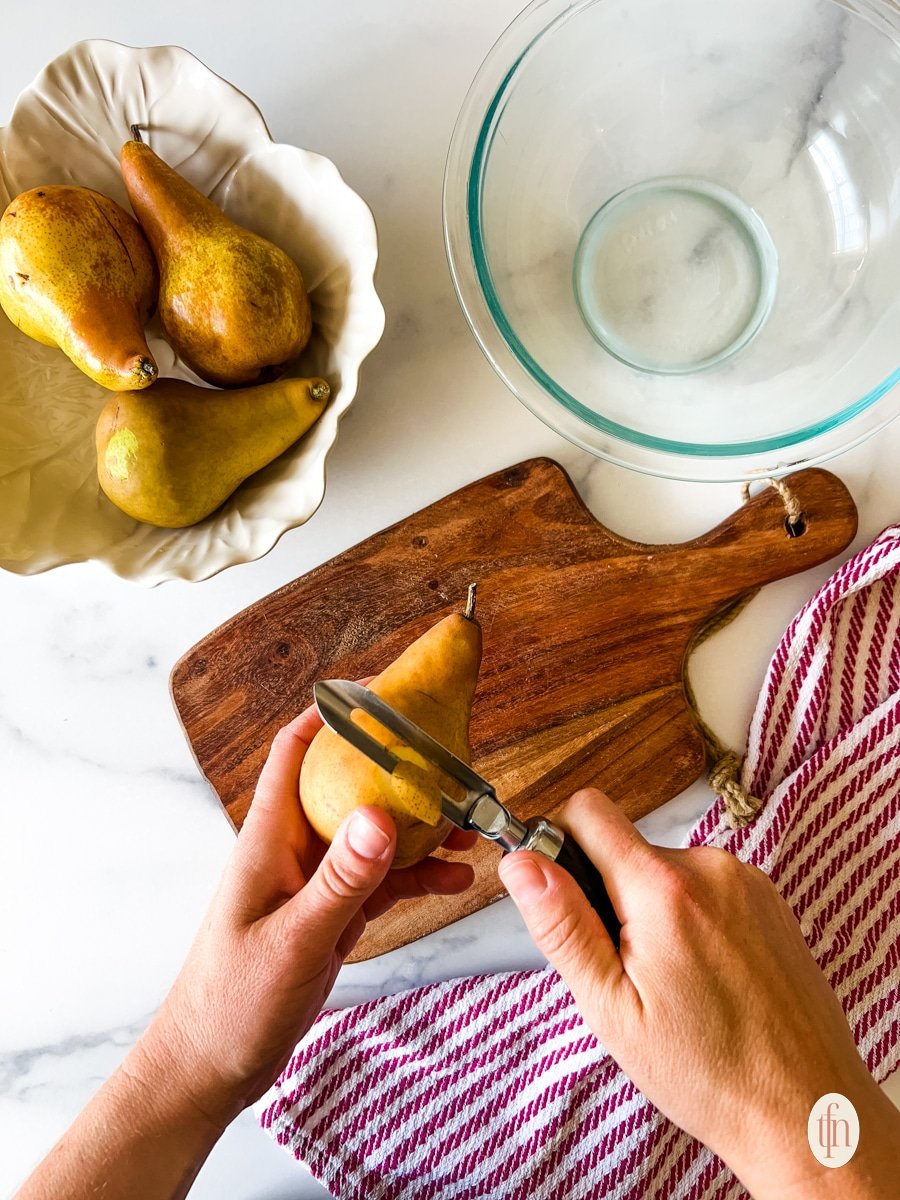
Different Ways to Cut a Pear
Slicing Pears
Pear slices are a great way to enjoy the fruit as a snack or to use in recipes. Here’s how to do it:
- Start by washing the pear under cold water and patting it dry.
- Hold it steady on a cutting board with one hand and use a sharp knife, small knife, or pairing knife in the other hand to slice off the stem end.
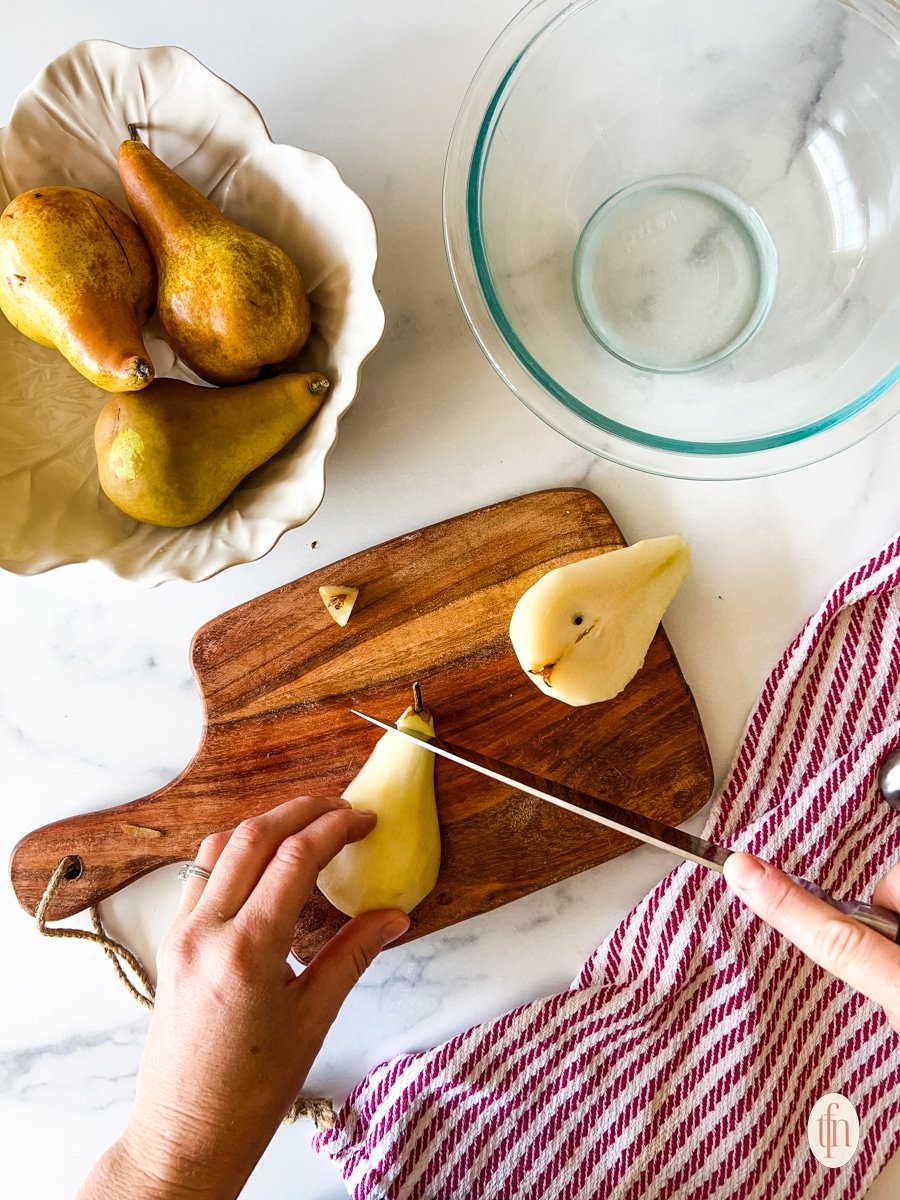
- Turn it over and slice off the other end.
- Stand it upright on the cutting board and carefully slice it downward to cut it in half.
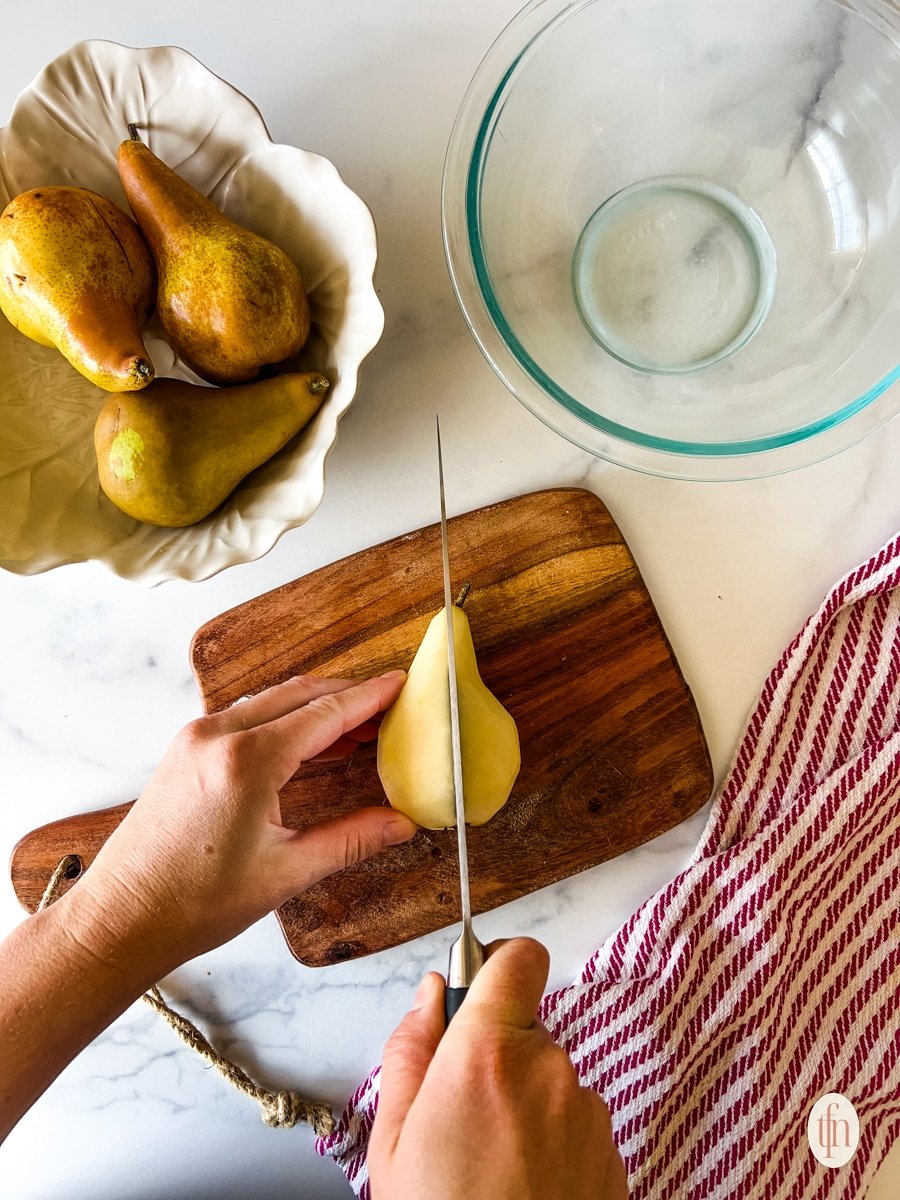
- Cut the seeds out with a diagonal slice on each half.
- Place one-half cut-side down on the cutting board and slice it into thin slices.
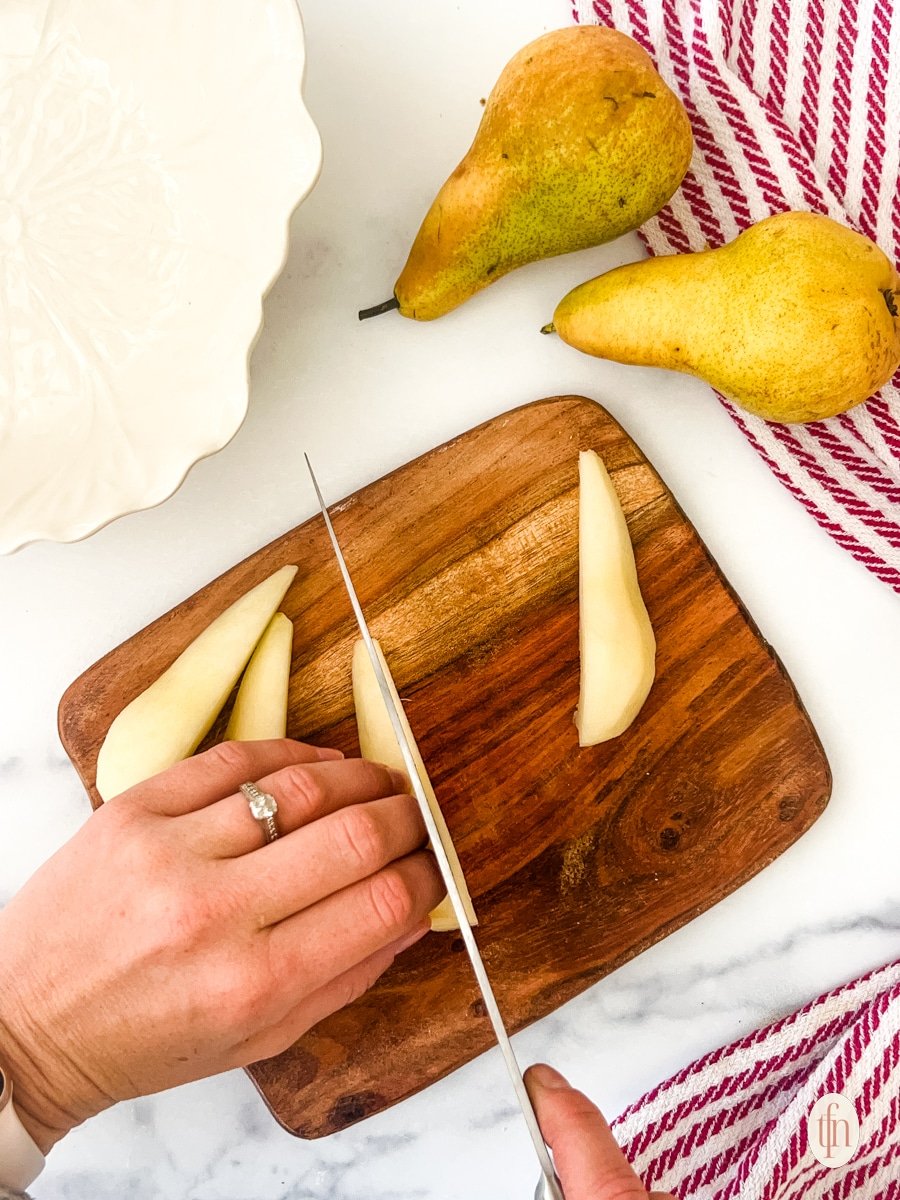
How to Core a Pear
Similar to apples, pears contain a core and black seed. If you need to remove the core for a recipe, here’s how to do it:
- Hold the pear steady on a cutting board with one hand and use a sharp knife in the other hand to slice off the stem end of the pear.
- Turn it and slice off the other end.
- Stand it upright on the cutting board and carefully slice it downward to cut it in half.
- Use a spoon or melon baller to scoop out the core and seeds from each half of the pear.

Pear FAQs
Pears tend to turn brown once they are cut, due to the oxidation process. To prevent this, you can sprinkle lemon juice or lime juice on the cut surface of the pear. The citric acid in the juice will slow down the oxidation process and keep the pear from turning brown. Eating brown pears is perfectly fine.
Yes, you can eat pear skin. The skin is a good source of fiber and contains many nutrients. However, you should wash it thoroughly before eating it to remove any dirt or bacteria that might be on the skin.
Pears should be stored at room temperature until they are ripe. Once they are ripe pears, you can store them in the refrigerator to extend their shelf life. However, refrigeration can cause it to become mealy and lose its flavor. Therefore, it is recommended that you only refrigerate the pear if you plan to eat it within a few days.
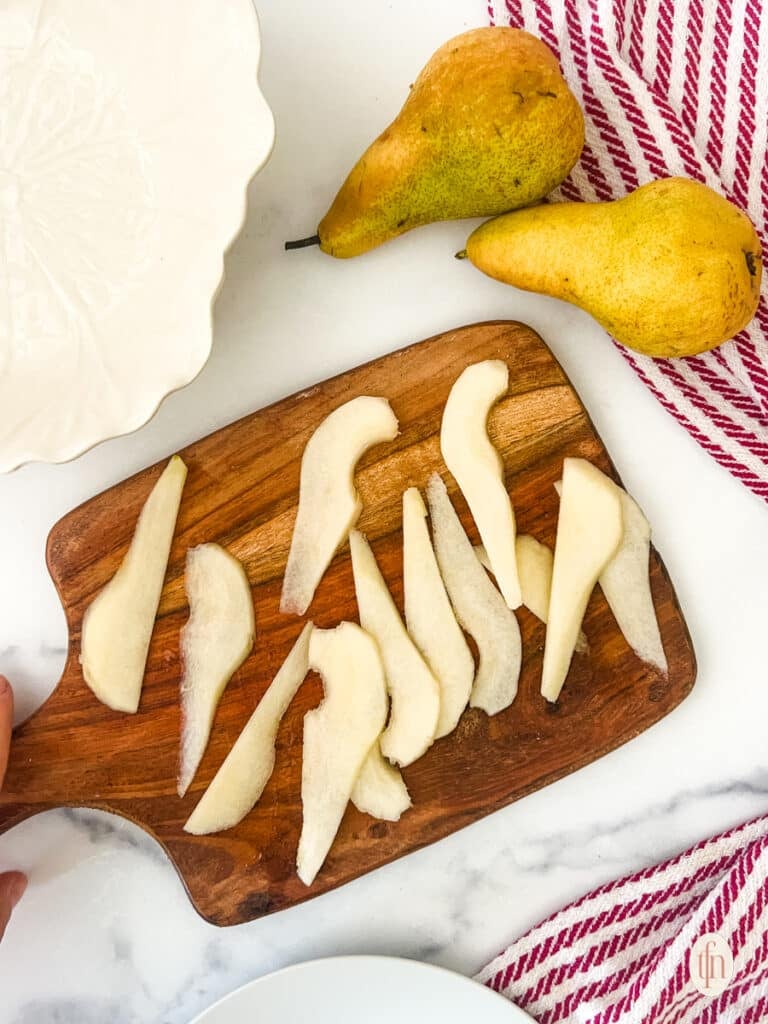

Shadi says
Thank you for this tutorial! It’s very helpful!
Neha says
And I could not agree more. Pears do have an odd shape! I am absolutely loving this idea of scooping the core out with a spoon!
Caroline says
Lots. of handy tips!
Anjali says
This was such a helpful guide to all things related to pears!! I know I’ll be coming back to reference this often, and will be cutting pears properly from now on!